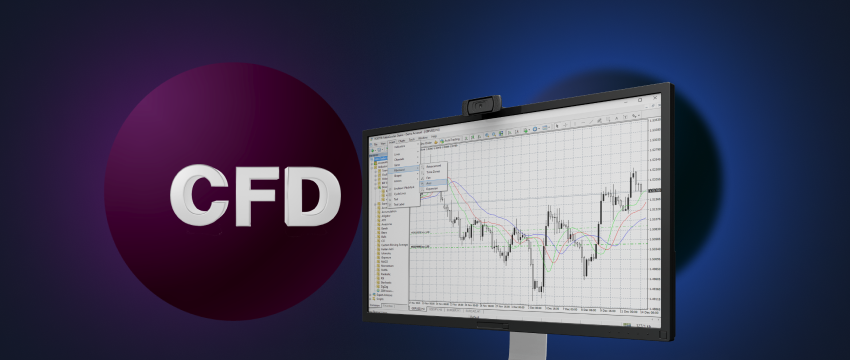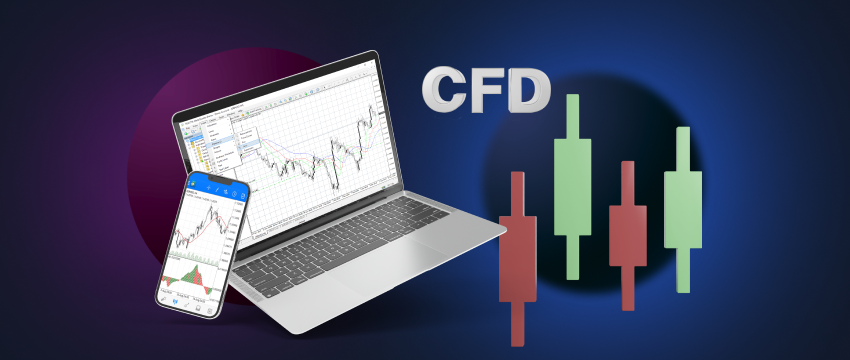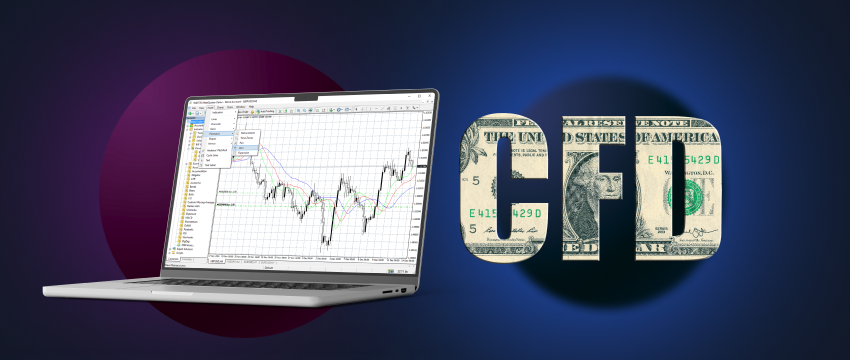CFDs have become more and more popular recently, thanks to their features and potential advantages that they provide to traders. CFD trading strategies, however, also carries some risks.
A contract for difference (CFD) is an agreement. The buyer pays the seller the difference in asset value.
There are various CFD strategies available, but traders should always keep in mind that there is a risk of losing money. It is vital that they conduct their own research before engaging in any trading activities. Moreover, they should never trade more than they can afford to lose.
El CFD trading strategies below will help you understand financial markets, the appeal of CFDs, and the associated risks.

CFD strategies: what are they?
CFD strategies are used to enter and exit trading positions. As their name suggests, these strategies use derivative products called contracts for difference, allowing traders to take both long and short positions. Traders have a huge variety of options for CFD strategies.
CFD strategies: Short term
Since daily CFDs have no expiration dates, they are ideal for short-term positions. In fact, most traders never hold a position beyond the day’s market close. We refer to this as day trading. People usually consider traders traders de día regardless of whether they follow swing or scalping trading styles.
They exit trades before the market closes primarily to avoid overnight fees that CFDs charge for holding open positions.
Using short-term CFD strategies, traders open and hold positions for a few seconds to a day at most. Finding smaller but increasingly prevalent opportunities within a larger trend is the goal in order to generate revenue.
These strategies require more concentration because you’ll be watching price charts and using technical analysis to determine entry and exit points. Let’s examine a few of the most widely used short-term strategies.
Range trading
Support and resistance lines are used by range traders to identify market reversal levels. Prices break both above and below these levels in trending markets. However, the price rebounds between these two levels in a rangebound market, resulting in a sideways movement.
Rangebound markets give short-term CFD traders the chance to swing trade or scalp profits off of tiny price movements. They initiate a trade, hold it just long enough to profit from the move, and then close it before reaching the point of exhaustion.
Traders frequently use momentum indicators to identify trends’ weak spots because these indicators signal an impending reversal in price action.
News trading
Another popular short-term CFD strategy is news trading, which involves capitalising on the volatility surrounding economic announcements. This strategy involves keeping up with news. It also includes observing past market reactions to similar events. This approach is grounded in fundamental.
News trading strategies typically focus on larger macroeconomic events. These include monetary policy announcements and data releases. Traders know these dates in advance and can forecast results more easily than with unexpected breaking news events. An excellent economic calendar is a news trading strategy’s most valuable tool, not individual indicators. This will assist in creating the schedule’s foundation.
Because prices often move differently in the short term after news events than they do over the long term, this is a short-term CFD strategy.
For instance, if the ECB were to announce rate increases, the EUR/USD exchange rate might temporarily increase. Alternatively, news following a meeting of the Australian Reserve Bank might cause a brief decline in the el AUD/USD. This could be followed by a longer-term uptrend.
Cobertura
A common CFD risk-management technique is hedging, which entails opening one or more positions to partially offset the risk of an open trade.
Because CFDs allow traders to profit from both rising and falling markets, they commonly use them for hedging. This implies that stockholders may initiate a short position in a company they own. Although investors commonly use hedging to reduce losses over shorter timeframes, they can also use it for longer periods.
Assume you held 100 Apple stock units. You have long-term trust in the company, but you fear your position will suffer from an impending earnings announcement. Rather than accepting the brief loss, you choose to establish a hedge. You initiate a short position with 100 Apple CFDs.
In the event that Apple stock drops, you can exit your CFD trade and collect your profit, which will lessen the loss on your initial investment. This would reduce the profits from your initial investment position if Apple shares rise instead, as you would lose money on your short CFD position.

CFD trading plan: Long term
CFD traders who want to take a longer-term position typically combine análisis técnico and fundamental analysis to gain a deeper understanding of the factors influencing a market’s price. Rather than focusing on transient price changes, they hope to profit from longer-term trends.
Position trading, which is most akin to investing, is the type of trading that most matches long-term CFD strategies. However, where traders are more likely to hold a trade open for weeks or months, investors may do so for months or even years.
Position traders employ more passive, trend-following strategies. When a trend begins, or as close to it as possible, they will try to enter a trade, take advantage of the body of movement, and exit it before the trend reverses.
It’s crucial to remember that short-term traders can also use longer-term CFD strategies; the only thing they would need to adjust is the timeframe for analysing price charts.
The following are a few CFD trading strategies that longer-term traders favour:
Support & resistance
Using indicators, a support and resistance strategy determines when an asset’s price is most likely to rise or enter a declining trend. These lines represent market exhaustion points, where sellers and buyers are unwilling to move lower or higher respectively.
Traders have previously employed these lines in a brief scalping technique. Long-term CFD traders can also use them, but on a different timescale. At a known point of support or resistance, they would open a long position or a short position, respectively. They would hold their trade until a new support or resistance line is reached where the trend reverses.
In order to determine these levels, you will be examining past price action to determine previous market reversals. Many strategies for determining support and resistance rely on short-term price fluctuations; however, a long-term CFD strategy would only consider the exhaustion points that develop over the course of several weeks or months.
Usually, traders will simply use drawing tools to draw the lines on their price chart, then use momentum indicators to confirm those lines by identifying the points at which a prior trend becomes weaker.
Breakout
Opening a trade as soon as a market “breaks out” of established support and resistance levels is known as breakout trading.
A breakout strategy is predicated on determining when the momentum persists through the levels, in contrast to the above strategy, which trades the swings between these lines.
A new trend usually begins when a price breaks through a level of support or resistance.
Thus, you would want to use trend lines and indicators to validate these price points, just as you would with other long-term CFD strategy. But at these points, you’re not searching for exhaustion. Rather, you’re searching for the movement to continue.

Pullback or retracement
A pullback, sometimes referred to as a retracement, is a brief deviation from the main trend. This would represent a brief decrease in price during a bullish run and a brief increase in price during a bearish run.
A CFD trader may be able to identify a more favorable moment to enter an established trend by keeping an eye out for these retracements.
However, it’s crucial to make sure the movement is only transient and not a permanent reversal because otherwise, you risk losing money on a transaction.
Technical indicators that indicate potential entry points or the beginning of longer-term reversals include Fibonacci retracements.
Descargo de responsabilidad: Esta información no se considera un consejo de inversión ni una recomendación de inversión, sino una comunicación de marketing.




